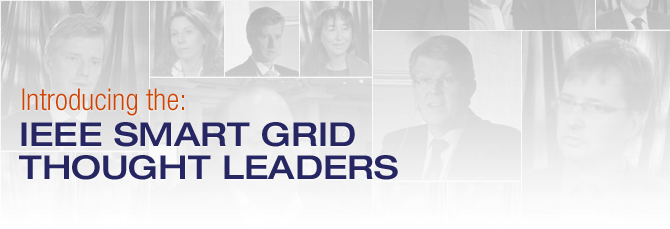Jim Prendergast

As part of an ongoing video interview series with Smart Grid experts around the world, we present a conversation with IEEE Executive Director, Jim Prendergast, who explores global and regional Smart Grid developments at the IEEE Smart Grid World Forum in Belgium.
VIDEO TRANSCRIPTION
[music]
Jim Prendergast: You've heard this morning talks about smart grid issues here in Europe. When I meet with industry and government leaders in other parts of the world, I've heard a number of issues driving regional interests.
For example, China is successfully investing in ultra high voltage transmission to more efficiently get energy to rural areas poised for development and to enable the worldwide use of electric vehicles, which the country has now declared as a national priority in its recently adopted 12th five-year plan.
Brazil is focused on improving distribution efficiency and economies by reducing power lost during transmission. Singapore has launched smart grid demonstration projects to support the development of a strategy to meet the growing energy demands of the country.
In India, the goal is to put an end to load shedding, increase electric power reliability, and reducing the cost of moving the country towards energy independence.
Finally, in the U.S., the goal is to achieve efficient and reliable transmission and distribution systems that can accommodate the growing green power sources and demands.
Amidst these regional descriptions and definitions, there is a common global theme. The reality that the energy industry, as we once knew it and grew it, is now undergoing a major transformation. Today's grid remains largely based on the architectures invented by its forefathers – Edison, Tesla, Westinghouse.
But virtually every major economy is now either piloting or deploying smart grid technologies because it clearly understands that we cannot run a digital 21st century economy on the 20th century grids. The increased focus on future energy supplies through the use of renewables, concerns for the environment, the use of technology to increase system efficiencies, and the policy, regulatory, and security debates, along with the need to educate and change the mindset and behavior of the consumers, these all reflect some of the major challenges that have emerged from this pending transformation. There are so many moving parts and so many complexities. There are so many different technologies and so many economic, political, and social issues. All of this makes getting our arms around this notion of smart grid a daunting task yet still a very exciting opportunity.
One of the most critical areas to the success of smart grid deployment is the development of global standards, and we heard about that this morning. Standards are critical to ensure that any device from any manufacturer can plug into the grid. For example, smart meters, hybrid electric vehicles, smart appliances just to name a few.
Creating these new technologies calls for individuals and organizations to collaborate, and we heard about that as well this morning. As many of you already know, the IEEE is a leader in the global development of industry standards. IEEE works very closely with ISO here in Europe, ITU, IEC, and other national and international standards bodies around the world. IEEE is uniquely positioned to both guide and collaborate on standards developments for smart grid. We have the experience bringing together key stakeholders from government and industry, united into a proven, unbiased, and open process for decision making and standards setting.
[music]
!--About Jim Prendergast
Content Goes Here
-->

